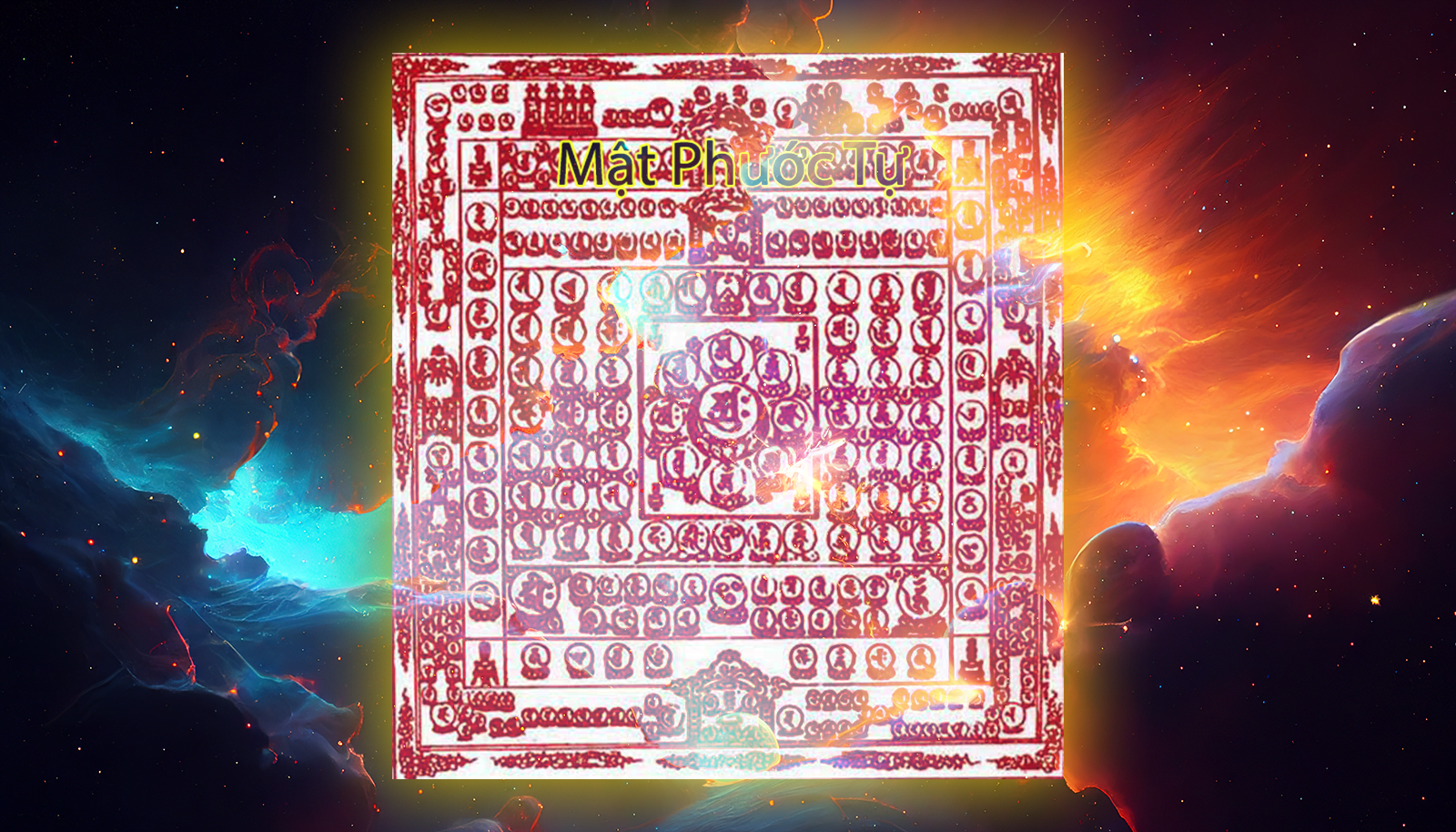Mandala or ‘Dan’ or Bodhi Mandala is a complex term. It literally means donation, gift, generosity, or a raised platform for the purpose of worshipping.
In the Mahavairocana Sutra, Vajrapani Bodhisattva asked: “Supreme master, why is this called Mandala?” Buddha replied, ” The place where Buddhas appear is called Mandala to indicate the highest position possible”. In India, the procedure of worshipping God starts with cleaning and flattening the ground.
In Secret Buddhism, a Mandala has other factors of ritual such as the Yantra, the Three Mysteries, and the Four Intelligences. Mandala is also called the “incomparable wheel” complete with all of its gears which includes the axle, bolt, spokes rim and ring circle. However the name for all of these components is too long and people prefer the simple Sanskrit term “Mandala”.
There are various structures of Mandala. The Mahavairocana Sutra indicates 4 types: round, square, triangle and crescent. The Vajrasekhara indicates 5 types: square, round, triangle, lotus and diamond.
According to the Mahavairocana Sutra, the square Mandala corresponds to earth; the round Mandala to water and space; the triangular Mandala to fire, and the semi-circle Mandala to air or wind. The square represents equality because the appearance of the ground is square. The round represents complete fullness because water and space are round. The triangle represents submission because the fire burns up in a triangular shape. The semi-circle represents elimination of disasters as the wind can destroy all obstacles by knocking them down.
Mandala has many other names. The Bodhi Mandala has paintings of Buddhas, and Bodhisattvas holding knifes, swords, wheels, etc. and is called Equality Mandala.
“Great Mandala is so named because the statues in the Mandala have five principal colors: yellow, white, red, black, blue, and corresponds to the five elements of Earth, Water, Fire, Wind and Space. it expresses the entire universe in which, viewed broadly, human beings and all living things maintain harmony and interdependence with each other. It includes all of the other mandalas”.
“Impartiality Mandala” is so named because the Buddhas in the Mandala represent beings with emotions, while knife, swords and wheels represent beings without emotions. The elements of the cosmos: Earth, Water, Fire and Wind, expand in space to create all impartial beings.
“Majestic Career Mandala” is so named because the molded or sculpted statues are meticulously decorated to express the grand career of the Buddhas and Bodhisattva in a lively manner.
“Dharma Mandala” is so named because the seed-syllables of the Buddhas represent good discipline, rules and regulations. It has the seed-syllable (root of a speech) next to the Buddhas’ title as their symbols. Dharma, in Sanskrit, means teaching or transmission. The methods for transmitting the mind of the Buddha to people are the Sutras, Sanskrit words, and the names of the Buddhas. The essence of the teaching is contained in bîja or seed mantras. Generally speaking, this refers to language, words, and written texts.
Mandala or Bodhi Mandala is therefore a place for worship rituals, where the follower of Secret Buddhism recites mantras and vows to cultivate the Buddha-Way. The Mandala varies greatly depending on which Sutras or mystic rituals are used. A Mandala is either built with scented soil, or is a large painting that has Mahavairocana Buddha on the top of it, or is -a painting of Bodhisattvas according to their ranking for the purpose of worship. The Buddha has explained that each Bodhisattva has a different supernatural power. They were depicted with their distinct Mudra in the paintings. When the Initiate prays to a certain Bodhisatva, imitating the gesture in the painting facilitates the identification with the Bodhisattva. Other people use a round or square glass to represent a Mandala.
The surroundings and atmosphere of the adoration place, which are the ground, the temple, the direction, the time, the clothing, the colors, the decoration, and the offerings, carries a meaning and contributes to support and help the initiate realize his wishes. The factors creating the worship place vary depending on the type of the mystic rituals performed. Sokusaiho ceremony is performed to repent and eliminate sinful influences. Zoyakoho is for increasing happiness. Kuyo is for calling to the celestial power. Gofuku is for subduing and breaking the aversion of an opponent. Kyoaiho is for requesting Buddha and Bodhisattva for protection, and Yeimmeiho for extending longevity. All those mystical rituals are considered completely efficient and will fulfill the wish of the initiate.
To summarize, all the above rituals are the symbols of the hierarchy of nature, and of the revolving movement in the universe, which influences human life. However, the complication of the arrangement and decor for those ceremonies can be simplified and remain efficient as long as one’s religious virtue conforms to the Buddha’s Vow.
Related Post
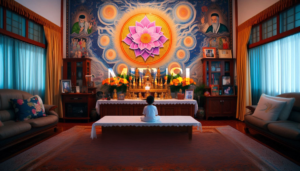
The Holy Force
The Holy Force Vietnamese: Kinh nghiệm về thần lực và tuổi thơ (posted at huyenbihoc.webs.com) My experience with the Force...
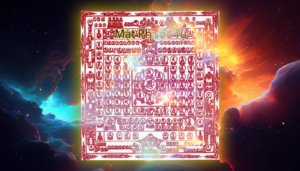
Chapter VI: I – Dharani – Mudra – Yantra – Mandala And Magic Circles
I. SIX LETTERS DHARANI KING SUTRA Shi Yi recorded in the Liang Dynasty Thich Vien Duc translation from Chinese to...
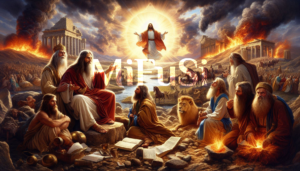
Misguided Doomsday Prophecies
Misguided Doomsday Prophecies Thiên Cơ Bất Khả Lậu... Lậu Bất Khả Tri!; by hoatam on Thu Oct 22, 2009 3:46...
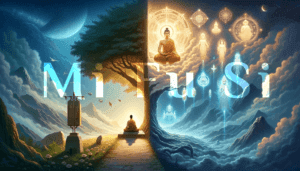
SELF-RELIANCE VS. DIVINE HELP
SELF-RELIANCE VS. DIVINE HELP by TTC on 04 May 2009, 03:18, translated by Horangi Question: What are the necessary steps...
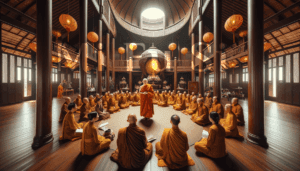
THE SUPERIORITY COMPLEX AND LACK OF TOLERANCE IN A VENERABLE
translated by Dianichi We would like to tell the story of a venerable monk known as the Living Buddha, who...
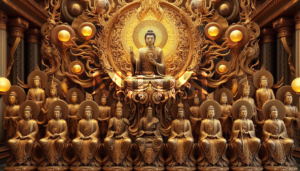
Nechung Oracle – Freedom in Exile
Dear Mystics Members, Explore an excerpt from the Dalai Lama's "Freedom in Exile." Delve into Chapter 12, "Of Magic and...

WITNESSING MEDIUMS AND SPIRITS AT WORK
WITNESSING MEDIUMS AND SPIRITS AT WORK (Một phiên làm việc của thần linh - sent by Thachanhtrang ngày 02 Tháng...
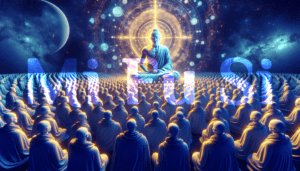
MEET THE “LIVING BUDDHA”
MEET THE "LIVING BUDDHA" (Gặp Phật Tại Thế by Anbình on 18 Feb 2014 - translated by Silly92, edited by...
